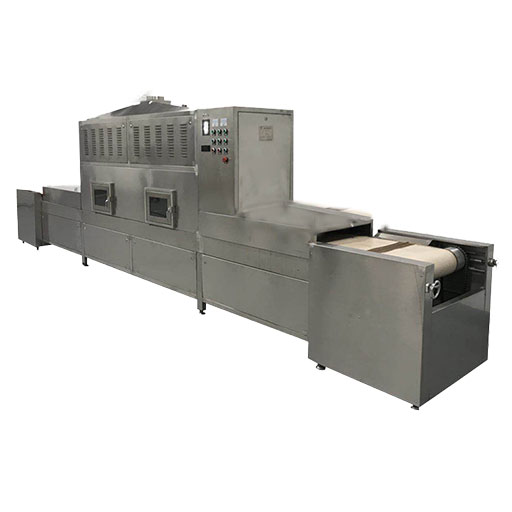The industrial drying has always been inefficient and time-consuming in many manufacturing industries. But all that is about to change with the introduction of the Microwave Tunnel Dryer. This new technology is set to transform the sector by using microwave power to speed up drying, leading to higher levels of speed, effectiveness, and uniformity. In this article, we shall be looking into what makes a microwave tunnel dryer work, its various uses, and its benefits to different sectors, among other things. Whether you deal with food processing, pharmaceuticals, or textiles, among other businesses that need drying procedures, knowing about this ground-breaking tech can significantly help improve your productivity and overall efficiency. Let us find out more about why microwave tunnel dryers are setting new records while at the same time changing how the drying industry operates.
What is a Microwave Tunnel Dryer?
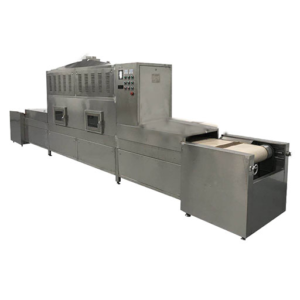
Image source: https://talinchina.com/
A Microwave Tunnel Dryer is an advanced industrial drying equipment that utilizes microwave energy to rid moisture from different substances. It is unique from traditional drying methods, which depend on outside heat sources, because this technology creates heat inside the material through electromagnetic waves. This even heating enables quick evaporation of water content, saving time and power. Frequently, it comprises a tunnel that products travel in on a belt conveyor as they are subjected to microwaves, which have been controlled depending on what needs to be dried at any particular moment within various items being processed.
How does a microwave dryer work?
A microwave dryer produces microwaves that pass through the dried material and cause water molecules to vibrate. This vibration creates heat inside the material, evenly distributed and making moisture evaporate rapidly. Generally, the system consists of a microwave generator, drying chamber, and conveyor system. The item is always under microwave energy while moving through the tunnel, guaranteeing uniform drying efficiency. Microwave dryers are more efficient than traditional approaches because they have an effective internal heating mechanism that saves energy and cuts down on drying time. It is best suited for industries that seek to eliminate moisture quickly and uniformly.
Advantages of using a microwave drying machine
- Quicker drying periods: Microwave drying has an effective inside heating system, which reduces the time required for drying materials. For industrial purposes, this fast-drying method improves efficiency.
- Uniform elimination of moisture: Microwave drying ensures constant heat distribution in the material, unlike traditional drying methods, which may not be even. Unevenness in this process could lead to over- or under-drying, which spoils products, hence making uniformity very important for quality control.
- Energy saving: In terms of energy consumption, microwaves are more efficient than any other dryer type available today. This is because they generate heat within items being dried, thus minimizing losses through transmission and conversion processes and reducing operational costs related to power consumption.
- Higher quality products: When things dry out, they tend to lose some nutritional composition and sensory properties if not done properly; fortunately, with microwave machines, one can achieve gentle controlled drying that preserves all these aspects, e.g., shape integrity (structural), nutritive value (nutritional), and taste/odor (sensory). Such a feature becomes essential when dealing with foodstuffs or any other delicate substances.
- Compactness: Compared to usual systems, where large spaces must be reserved due to bulky equipment sizes like ovens, microwaving devices are usually designed smaller, hence requiring less floor space utilization, especially where rooms are limited, such as labs, etc.
These benefits enable technological advancement in terms of efficacy, reliability, and affordability within microwave driers employed throughout various sectors involved with air removal during processing activities.
Critical components of a microwave tunnel
- Magnetron: The magnetron is at the heart of a microwave tunnel. It produces microwaves by converting electrical energy into microwave radiation and then focuses them onto drying materials.
- Waveguide: The waveguide directs microwaves from the magnetron to the drying chamber, ensuring that they are delivered efficiently and uniformly through the substance.
- Conveyor System: A conveyor system moves things along a controlled rate in a microwave tunnel. This allows for adjusting the time it takes to dry them so they receive equal exposure to microwaves.
- Drying Chamber: The drying chamber is an enclosed area where items are placed for exposure to microwaves. It ensures the even distribution of microwave energy necessary for uniform dehydration.
- Control System: A control system permits operators to oversee all aspects of drying. Power levels, conveyor speed settings, and drying duration can be adjusted precisely with this system, providing accurate control over different parameters needed for optimum results in drying processes.
- Cooling System: Frequently, cooling systems are integrated during production runs due to the heat generated during operations; hence, their purpose is self-explanatory: safe working temperatures should prevail while avoiding overheating situations.
- Safety Interlocks: Safety interlocks play a big role in ensuring safe operation within any given Microwave Tunnel setup; these mechanisms guard against random exposure to radiation or shut down the entire facility when a malfunction occurs.
These are just some of several other parts that contribute to the efficient controlled environment creation inside a microwave tunnel, facilitating optimal industrial drying process realization across various applications.
Why Choose a Microwave Drying System?
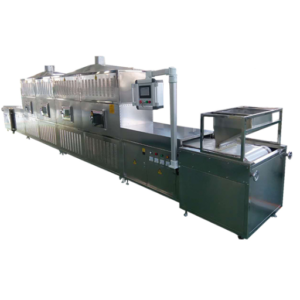
A microwave drying system has many advantages over conventional methods of drying. First, it is fast and speeds up the production process while minimizing energy consumption. Second, uniformity in drying reduces the risk of uneven moisture distribution, ensuring consistent product quality. Moreover, microwave drying is frequently considered greener because less heat and air movement are required. Finally, controlling precisely how something dries makes it possible to adapt to different needs, thereby becoming useful in many industries.
Benefits of microwave drying for industrial use
Microwave drying has several benefits for industrial use. Here are some of them:
- Speed and efficiency: Microwave drying is much faster than traditional methods, which can save energy and increase productivity by shortening the time it takes to dry things. In addition, this method enables continuous processing that improves operational efficiency.
- Evenness: This technology ensures uniformity while drying, so there are no cold or hot spots left behind—every part gets dried equally well, which leads to consistent quality throughout all batches produced. It is especially important for delicate or high-cost items as well as those designed for performance since they need to maintain their properties.
- Energy saving and sustainability: Microwave dryers are usually energy-saving because they require less power than other methods of drying materials. Apart from reducing operating expenses, this also helps protect the environment due to lower consumption rates overall.
These advantages make microwave drying one of the best options available regarding effectiveness, quality assurance, and eco-friendliness within many industry sectors today.
Comparing microwave heating vs. conventional methods
When we look at microwave heating and conventional methods, there are a few essential differences and benefits that can be seen:
- Time efficiency: Microwave heating significantly reduces the time it takes to heat or dry something. Traditional methods use conduction and convection—which both may take long—while microwaves heat directly and evenly, usually finishing assignments in a percentage of the total time.
- Energy consumption: A microwave is more energy-saving than an oven on average. Large amounts of air or other media must be warmed up during heating with usual methods; therefore, they consume much power but give little heat. Microwaves warm only necessary things directly, so they use less electricity which saves money too.
- Control over temperature uniformity: Conventional systems tend to create places where hot spots occur because they do not distribute warmth equally. This feature is essential for delicate applications when slight deviations ruin product quality or safety standards. In contrast, microwaving systems provide control precision and even temperature distribution throughout an object being heated.
- Environmental impact: Microwaving is greener due to its effectiveness and lower demand for fuel. It helps save fossil resources while reducing CO2 emissions, thus contributing greatly to sustainable development goals.
- Ease of scaling up and flexibility: Microwave ovens can easily be adjusted to work with any industrial process; this cannot always be said about other types, such as electric ones, which might need major alterations if used at larger volumes.
In general, therefore, microwave radiation outperforms conventional techniques mainly in terms of rapidity, efficiency in energy usage levels achieved, and uniformity maintained during environmental conservation efforts made, among others like reducing the global warming effect caused by carbon dioxide gas releases from burning fossil fuels; hence should find wider adoption across different sectors for purposes relating to heating or drying objects.
Cost-efficiency of microwave drying equipment
Microwave drying machines are affordable in many ways:
- Saving Power: Microwave energy allows the dried material to be heated directly, reducing wastage compared to traditional drying methods and significantly saving electricity bills.
- Cheap Running Costs: Microwaves dry faster than other technologies, thus requiring less time for workers or operators and reducing labor and operational costs.
- Less Maintenance, More Life: Unlike old models, new microwave ovens are created strong enough to last long without frequent breakdowns, reducing expenses incurred during repair works while minimizing downtime periods within production lines.
These points demonstrate that microwave drying machines offer good value for money across different industrial spheres.
How Does a Microwave Drying Machine Improve Production?
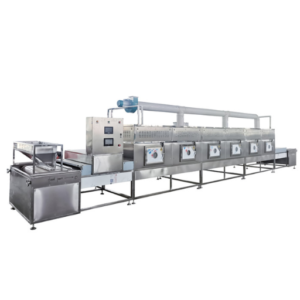
A microwave drying machine achieves greater output, making the process efficient and the quality of products better. This means that a considerable margin reduces the time taken for drying through microwaves; hence, faster processing can be done, leading to increased throughput. Such speed in drying not only improves rates of production but also allows for closer-packed scheduling and quicker turnarounds. Furthermore, evenness in drying is guaranteed by uniform heat distribution during microwave drying, reducing defects or wastage. Exactitude in moisture content leads directly to higher quality products, too. Additionally, energy efficiency saves on operational costs, making microwave drying more profitable overall.
Increasing production line efficiency
The leading sources make many advancements to maximize the efficiency of production lines with a microwave drying machine. Firstly, it is essential to reduce the time required for drying; with this method being faster than any other known so far, more units can be treated within a specified period, thus increasing manufacturing capability. Secondly, the evenness of heating, which is inherent in microwaves, guarantees uniformity of quality, hence less rework or wastage that may interfere with smooth flow in the production process. Thirdly, energy saving during operation reduces costs and promotes ecological friendliness at the workplace. By these means, microwave drying greatly improves productivity on a line by ensuring higher throughput and good product quality.
Reducing drying time with in-line microwave heating and drying
The quickness of drying time can be substantially reduced by directly aiming at the water molecules within the product using inline microwave heating and drying. Faster than any other traditional drying method is the claim of this method, as stated by reliable sources, where thermal conduction is relied on for internal drying after heating the surface of products. Microwaves ensure absorption occurs uniformly in all parts of an object, thereby absorbing energy throughout its whole volume so that each part may dry at once. Such effectiveness leads to a significant decrease in general drying duration, which enables producers to increase output speed, decrease power usage, and maintain high-quality goods with minimum defects.
Ensuring quality through uniform microwave drying
Bursty, perplexing language — Uniform microwave drying is essential for the excellent quality of the end product. The leading benefit of microwave drying is that it heats uniformly through the product. This uniformity in energy distribution prevents hotspots and uneven moisture content, which are typical problems experienced by conventional dryers. When both internal and external temperatures are kept constant, items’ structural integrity, texture, and nutritional value are retained while ensuring that such things do not support bacteria growth or spoilage, thus prolonging their shelf life. In summary, microwave drying offers dependable results for quality control during production line processes that can be repeated without fail, hence making this method indispensable in any modern setup.
How to Install and Maintain a Microwave Tunnel Drying System
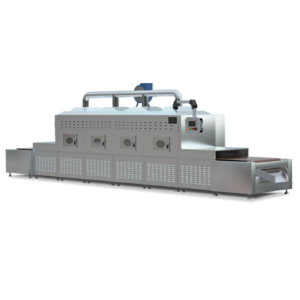
Installing a Microwave Tunnel Drying System
- Preparation of the Site: Choose an appropriate place for the microwave tunnel dryer. Ensure it has enough space to accommodate the equipment and for proper ventilation and safety clearance. The site should be dry and not directly exposed to harsh weather conditions.
- Power Supply Installation: Determine your system’s power needs and make the necessary electrical connections. This usually involves working closely with a licensed electrician who will ensure enough power supply capacity within the facility for this type of machine to be used.
- Setting up the Equipment: Follow the manufacturer’s instructions when assembling these dryers so that everything fits together well without any hiccups or complications arising later on during operation or maintenance periods. Such instructions may include, among others, connecting different units like modules, conveyor belts, etc., together with their respective peripherals.
- Calibration and Tests: After putting all parts together, calibrate it so that each component operates properly as expected; otherwise, things might go wrong, such as failure to achieve required drying temperatures or uneven heat distribution, among others. Carry out initial tests, too, to check whether everything is aligned correctly, microwave emission levels are safe enough according to set standards, and the overall integrity of such a system.
-
Safety Measures: Conduct thorough inspections aimed at ensuring compliance with various protective measures put in place during the installation phase, hence guaranteeing good health status for both workers involved directly or indirectly with these devices. Check if shielding against leaks from occurring due to excessive radiation exposure has been done properly. Also, verify that emergency stop functions are functioning correctly.
Maintaining a Microwave Tunnel Drying System
- Regular Checking: Implement periodic checks to assess the condition of machinery. Look out for conveyor belts, electrical connections, and microwave emitters’ signs of wearing out.
- Cleaning Procedures: Set up a cleaning timetable to eliminate any residues or build-ups that might affect the system’s performance. Ensure that you clean microwave windows properly so that they can work accurately.
- Replacing Components: Keep an inventory of essential spare parts like magnetrons and waveguides. Install these elements whenever necessary to avoid downtime during operations.
- System Calibration: The system should be regularly recalibrated to keep it performing at its best. This may involve changing power levels and conveyor speeds, among other critical parameters, depending on the materials being dried.
- Training Employees: Continuously train operators and maintenance staff on current methods and safety measures, which will improve their efficiency, thereby increasing overall efficiency while maintaining high levels of safety.
By following these steps, one is guaranteed an effective installation and proper care for microwave tunnel drying systems that contribute significantly to increased productivity and good quality products.
Installation tips for industrial microwave dryers
- Preparations for the Site: Make sure that the site where you will put it is clean, dry, and flat. Give enough space to accommodate the machinery and enable operators to move around it safely. You should also consider ventilating it so it does not overheat while working.
- Power Supply: Ascertain that there is a stable power supply with correct voltage and current ratings for this kind of industrial microwave dryer. Proper grounding plus surge protector installation will shield appliances against electric abnormalities.
- Proper Positioning: The drying machine must be fixed at a place that limits its exposure to such external factors as too much air dust or moisture content since they may adversely affect its efficiency or lifespan. Additionally, fasten equipment tightly so that vibrations do not occur during use.
- Ventilation and Exhaust Systems: Set up good ventilation systems alongside exhaust ones. These help get rid of heat produced together with steam during the drying process, thereby creating a conducive environment for operation. They ensure that there are always optimal temperatures required for this purpose, hence maintaining product quality.
- Safety Precautions: Use interlocks, emergency stops, and proper shielding materials to prevent leakage of microwaves while in use or any other given time; teach employees about what they should do when there is an emergency and ensure safety devices can be accessed easily.
-
Testing and Calibration: Carry out thorough tests after installing a system like this one so that calibration is done correctly, depending on the specific needs desired from it. Adjusting conveyor speeds depending on power levels applied during different stages of the materials drying process, among other things, will maximize performance optimization.
By following these steps during installation, you can rest assured knowing your industrial microwave dryer is functioning properly and safely, thereby enhancing productivity levels while at the same time improving product quality standards.
Maintenance best practices for microwave drying equipment
- Regular Check-Up and Cleaning: Perform a routine inspection of the microwave drying machine to prevent dirt or other things that could cause problems with its performance from accumulating. The belts, filters, and ventilation system should be checked more carefully. Use cleaning agents that do not scratch surfaces so as not to spoil any parts.
- Looking Over Parts and Changing Them: Some parts, like magnetrons, waveguides, and control systems, need to be monitored for wear and tear regularly. If any signs of damage are detected during this process, then appropriate replacements should be made immediately to avoid breakdowns and maintain efficiency. Having critical spares at hand is also important because this reduces downtime significantly.
- Setting Right and Making More Sensitive: Adjust these machines occasionally depending on their capacity utilization rates vis-a-vis specific dried materials. This will ensure consistency in outcome by ensuring throughputs match the required levels for every item passed through the drier.
- Oiling and Doing Mechanical Check-Ups: Make sure you grease all moving parts, especially those found along conveyor belts or motors, which may need it most frequently due to their more frequent use compared to others. During maintenance work such as oiling, follow instructions given by manufacturers concerning the frequency at which they recommend lubricating affected areas since high friction could cause wearing out quickly if left unattended over an extended period.
- Recording Results and Keeping Watch: Have a system of supervising different operations carried out using an appliance like power consumed during each cycle run, times taken before clothes dry, etc., to record them somewhere safe for future reference purposes when necessary. Also, records about spare part changes should be kept alongside tests done after such interventions. This helps establish patterns upon which subsequent decisions regarding the next move shall rely, thus ensuring timely intervention based on previous experiences gained through similar undertakings.
By adhering to these guidelines, you can rest assured that your microwave dryer will continue working efficiently and safely while delivering outstanding performance and product quality.
Safety considerations for microwave ovens and industrial microwave systems
As far as microwave ovens and industrial microwave systems are concerned, nothing is more important than safety. Here are some essential safety points from leading resources about this topic:
- Radiation Safety: Microwave ovens and industrial systems emit non-ionizing microwave radiation as they work. It is essential that you shield the equipment well enough to prevent any leakages of these radiations. You should also inspect door seals and hinges regularly and make sure that the safety interlocks operate correctly to avoid microwave emissions whenever the door is opened.
- Handling and Operational Protocols: Always follow the manufacturer’s instructions for operation and maintenance procedures. This will help prevent chemical leaching or melting, which may occur if non-microwave-safe containers are used, thereby contaminating food or products. Knowledge among operators handling such appliances should be enhanced through thorough training sessions for emergency shut-off procedures.
- Fire and Burn Hazards: Burns can be caused by heated containers or products, so protective gear, e.g., gloves, should be worn when necessary. Materials that are heated must not overheat since this can lead to fires. Also, ensure cleanliness around microwaves so that no food particles get burnt due to debris catching fire within them.
- Venting and overheating: Proper ventilation must be ensured for domestic and commercial (industrial) microwaves so they don’t overheat. Poorly vented appliances may become obstructed, causing them to overheat, which might result in their malfunctioning altogether if not checked in time. In addition, industrial facilities require adequate cooling arrangements through good design practices to achieve safe operating temperatures during various operations.
-
Electrical Safety: There are high-voltage parts found in microwaves, which, if mishandled, can pose a danger. Ensure you plug the equipment into a grounded outlet and avoid using extension cords. Inspect electrical cords periodically to prevent shocks or short circuits caused by damaged wires.
By following these precautions, users will be protected while microwave systems will remain intact, thus ensuring safety in food processing and handling, among other materials.
What Are the Applications of a Microwave Drying Machine?
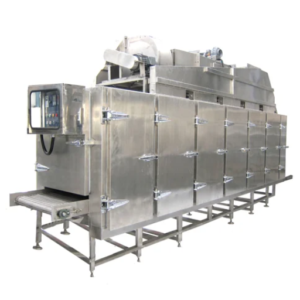
A microwave drying machine is one of the most efficient and accurate industrial appliances. For instance, in the food industry, it can dry fruits, vegetables, or cereals, guaranteeing that dried products remain nutritious and flavorful. In the pharmaceutical sector, this device is used to dry active components and tablets to improve stability and prolong the shelf life of medicines. Ceramics and textile industries also use microwave drying machines to speed up material drying processes, thus enhancing production efficiency. Additionally, environmental application involves sludge drying, which reduces volume, making it easy to dispose of waste materials.
Food industry and pet food drying
Due to their ability to dry many different products quickly, microwave drying machines are a must-have in the food industry. These machines improve the shelf life and quality of fruits, vegetables, grains, and spices by rapidly removing moisture while keeping necessary nutrients and flavors intact. Regarding pet food, microwave drying gives room for accuracy in drying parameters, resulting in uniformity and nutritional compliance with best-quality products. Additionally, this method saves time during production and reduces energy costs, thus making it environmentally friendly and pocket-friendly for human beings’ diets or animal feedstuffs.
Using microwave energy for pharmaceutical drying
The pharmaceutical industry utilizes microwave energy to dry active pharmaceutical ingredients (APIs) and finished products such as tablets and capsules. This method has several benefits, such as shorter drying times and even uniformity of moisture content. Manufacturers can preserve chemical stability and therapeutic activity by employing microwave energy. On the other hand, it does not only reduce thermal degradation during drying but also save pharmacological properties intact. Precise controlling capability over microwaves allows uniformity in drying, which is crucial for quality maintenance and potency retention among pharmaceuticals. In summary, applying microwaves for drying in pharmaceuticals enhances product quality while cutting down process time, thereby improving operational efficiency.
Microwave tunnel dryer applications in textile and ceramics
Microwave tunnel dryers are essential in the textile and ceramics industries because they are practical and efficient. In the textiles industry, they are used to quickly and uniformly eliminate moisture from fabrics and yarns to improve their overall quality and lower the chances of mildew or any other problems arising from dampness. This method involves fast drying, which is also helpful in preserving the colors and textures of materials used for making clothes, unlike traditional ways.
Ceramic products like tiles and sanitary ware can be dried using microwave tunnel dryers in the ceramic industry. The controlled conditions during drying prevent cracking or warping, maintaining the intended shapes and structural strength of ceramics. Additionally, the uniformity of drying provided by these machines is essential for producing high-quality pieces from this material. Therefore, microwave tunnels simplify production processes within the textiles and ceramics sectors while improving energy efficiency and product quality enhancement.
Frequently Asked Questions (FAQs)
Q: What is tunnel microwave drying?
A: Tunnel microwave drying uses an industrial microwave oven to uniformly evaporate moisture content from materials as they pass through a tunnel using microwave heating and drying systems.
Q: How does a tunnel microwave drying system work?
A: A tunnel microwave drying system utilizes microwave energy, typically at 2450 MHz, to heat the moisture within the material. The material moves through a drying chamber on a conveyor belt, allowing for efficient and uniform drying.
Q: What are the benefits of using an industrial microwave oven for drying?
A: Industrial microwave ovens offer rapid and even heating, reduced drying times, and improved product quality. They also enable better control over moisture content and reduce energy consumption compared to conventional dryers.
Q: Can tunnel microwave drying be used for all types of materials?
A: Tunnel microwave drying can be effective for various materials, including food products, pharmaceuticals, and industrial materials. However, the specific drying method may vary depending on the material’s properties and moisture content.
Q: What is the power capacity of a 6kw microwave drying unit?
A: A 6kw microwave drying unit uses 6 kilowatts of power to generate microwave energy for the drying process. This power level is suitable for small to medium-scale industrial processing applications.
Q: How do you ensure uniform drying of materials in a tunnel microwave drying system?
A: Uniform drying is achieved by carefully controlling the conveyor belt speed, the power of the microwave applicator, and the distribution of microwave energy within the drying chamber. Additionally, hot air may be used to complement the moisture evaporation process.
Q: What safety measures are implemented to prevent microwave leakage in industrial microwave ovens?
A: Safety measures include shielding and sealing of the drying chamber, routine monitoring and maintenance of the equipment, and ensuring proper operation of the microwave inert (IMS) system to detect any microwave leakage.
Q: How does tunnel microwave drying compare to conventional drying methods?
A: Tunnel microwave drying is generally faster, more energy-efficient, and offers better control over moisture content than conventional dryers. It also helps optimize the drying process and ensure high product quality.
Q: What industries benefit from using tunnel microwave drying systems?
A: Industries that benefit include food processing (e.g., mealworm drying machines), pharmaceuticals, textiles, and other industrial processing sectors where quick and uniform drying of materials is critical.
Q: Are tunnel microwave drying systems available as stand-alone or modular units?
A: Tunnel microwave drying systems are available in both stand-alone and modular configurations, allowing for flexibility in terms of installation and scalability to meet specific drying requirements.













